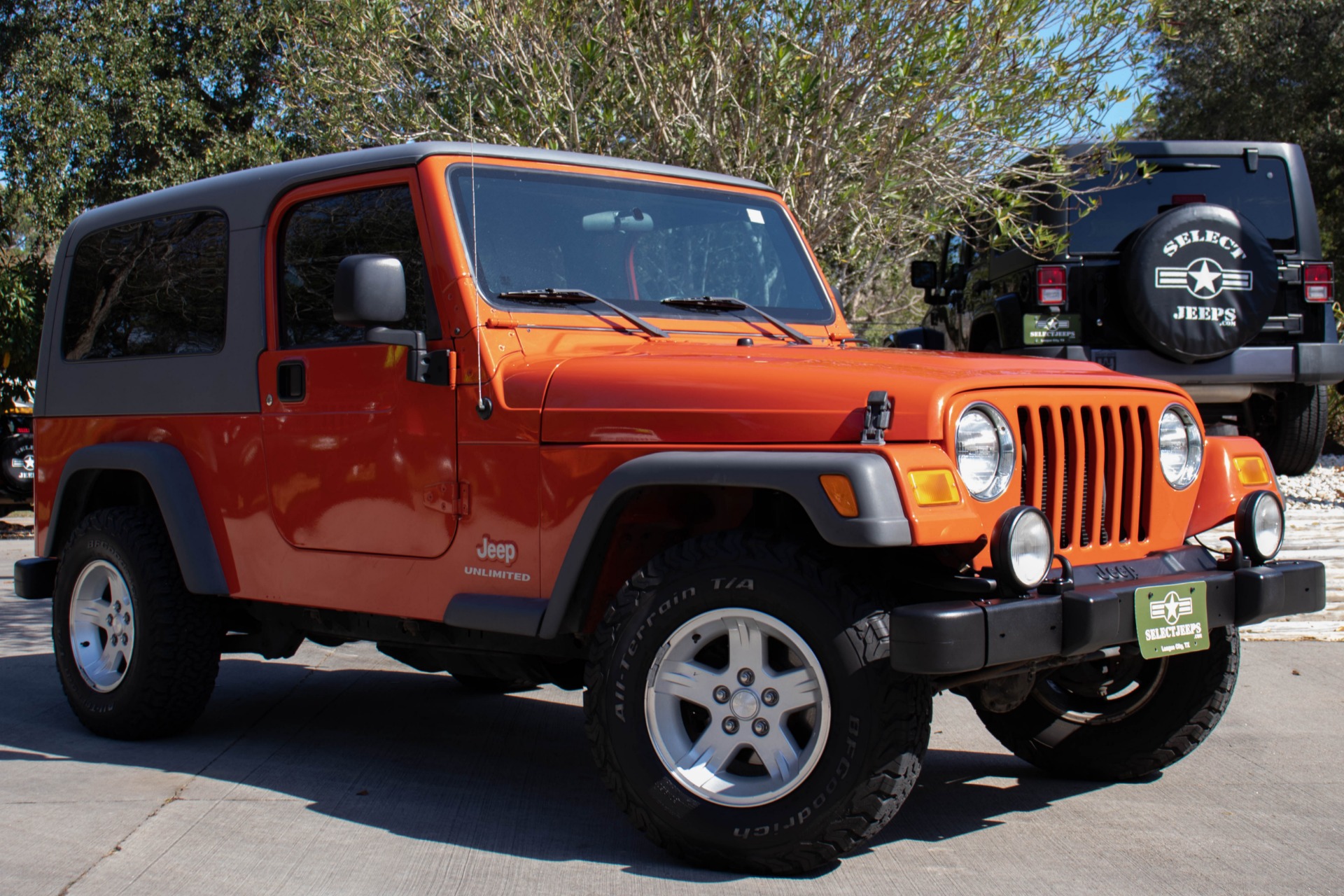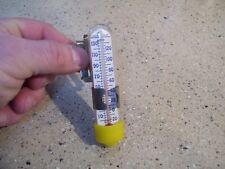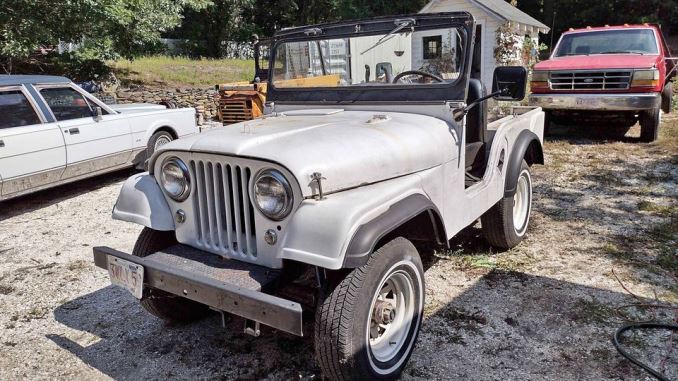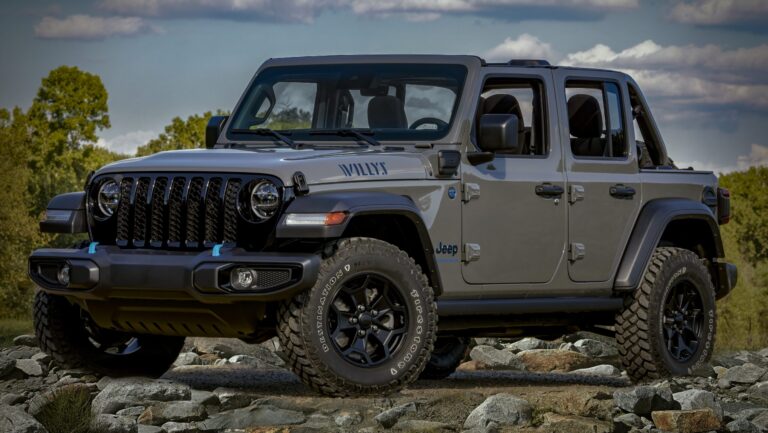2005 Jeep Hardtop For Sale: Your Comprehensive Guide to Finding and Owning a Legend
2005 Jeep Hardtop For Sale: Your Comprehensive Guide to Finding and Owning a Legend jeeps.truckstrend.com
The rumble of a robust inline-six, the unmistakable silhouette, and the promise of adventure beyond the pavement – these are the hallmarks of a Jeep Wrangler. Among the most sought-after iterations for off-road purists and daily drivers alike is the TJ generation (1997-2006), and specifically, the 2005 Jeep Hardtop For Sale. This particular model year stands out as one of the last to feature the legendary 4.0-liter straight-six engine before the JK redesign, making it a sweet spot for those seeking a blend of classic Jeep ruggedness, modern amenities (for its time), and the practical benefits of a factory hardtop.
For anyone navigating the used vehicle market with a desire for a capable, customizable, and increasingly collectible SUV, understanding the nuances of a 2005 Jeep Hardtop is crucial. This article serves as your definitive guide, delving into why this specific model is a desirable acquisition, what to scrutinize before purchase, and how to make an informed decision that leads to years of open-air (or securely enclosed) motoring bliss.
2005 Jeep Hardtop For Sale: Your Comprehensive Guide to Finding and Owning a Legend
Why a 2005 Jeep TJ Hardtop? The Enduring Appeal
The 2005 Jeep Wrangler, part of the beloved TJ series, represents a significant chapter in Jeep’s history. It combines the classic round headlights and seven-slot grille with coil-spring suspension, offering a vastly improved ride quality over its leaf-sprung YJ predecessor, while retaining the solid axle setup crucial for serious off-roading.
Key attractions of the 2005 TJ:
- The Legendary 4.0L I6 Engine: Renowned for its bulletproof reliability, ample low-end torque, and ease of maintenance, the 4.0-liter inline-six is arguably the crown jewel of the TJ. 2005 was one of the final years this engine was offered, making it a highly desirable feature.
- Robust Drivetrain Options: Available with manual (NV3550 or NSG370) or automatic (42RLE) transmissions, and the venerable NP231 transfer case (or NP241 in Rubicon models), the 2005 TJ is built to withstand abuse.
- Off-Road Prowess: Out of the box, the TJ is incredibly capable. Its short wheelbase, excellent approach/departure angles, and solid axles make it a formidable trail machine. The Rubicon package, introduced in 2003, further enhances this with Dana 44 axles, front and rear lockers, and a 4:1 transfer case.
- Customization Potential: The aftermarket support for the TJ is immense. From lift kits and larger tires to winches and armor, you can transform a TJ into anything from a mild overland rig to an extreme rock crawler.
- The Hardtop Advantage: While soft tops offer the ultimate open-air experience, a factory hardtop provides superior noise reduction, enhanced security against theft, better insulation for cold weather, and a functioning rear defroster and wiper. This makes it a much more practical daily driver, especially in varied climates.

Key Considerations When Buying a 2005 Jeep Hardtop
Purchasing a used vehicle, especially one as prone to modification and hard use as a Jeep Wrangler, requires a keen eye. When looking at a 2005 Jeep Hardtop for sale, focus on these critical areas:
1. Condition of the Hardtop Itself

- Cracks and Damage: Inspect the fiberglass for any cracks, especially around mounting points or corners. Hairline cracks can expand.
- Seals: Check the rubber seals around the windows and where the hardtop meets the body for cracks, dryness, or signs of water leaks. A leaky hardtop is a nuisance.
- Windows: Ensure all glass is intact. Test the rear defroster and wiper functionality, as these can be costly to repair.
- Mounting Hardware: Confirm all bolts and clamps are present and in good condition.
![]()
2. Rust Inspection – The TJ’s Arch-Nemesis
This is arguably the most critical inspection point. TJ frames are notorious for rusting from the inside out, particularly in areas exposed to road salt.
- Frame: Use a flashlight and a small hammer to tap the frame, especially around the control arm mounts, skid plate mounts, and behind the front wheels. Listen for a dull thud (good metal) versus a crunch or hollow sound (rust). Pay close attention to the rear sections near the gas tank skid plate.
- Body: Check the rocker panels, floorboards (under the carpet), wheel wells, and fender flares for bubbling paint or perforations.
- Suspension Components: Inspect coil spring perches, shock mounts, and control arms for heavy rust.
3. Powertrain and Drivetrain
- 4.0L I6 Engine:
- Oil Leaks: Check for leaks around the valve cover, oil pan, and rear main seal. Minor leaks are common, but significant ones can be costly.
- Exhaust Manifold: Listen for ticking noises, especially on cold starts, which indicate a cracked exhaust manifold (very common).
- Crankshaft Position Sensor (CPS): A failing CPS can cause stalling or no-start conditions.
- Cooling System: Check coolant level, condition, and look for leaks from the radiator or hoses.
- Transmission:
- Manual: Test clutch engagement, smooth shifting through all gears (including reverse). Listen for grinding or whining.
- Automatic: Check fluid level and condition (should be red, not brown or burnt-smelling). Ensure smooth shifts without hesitation or slipping.
- Transfer Case (NP231/NP241): Engage 4WD high and low. Listen for grinding or clunking. Ensure the linkage shifts easily.
- Axles (Dana 30/35/44): Look for fluid leaks from the differential covers or axle seals. Listen for excessive whining or clunking noises during the test drive, which could indicate worn gears or bearings.
4. Suspension and Steering
- Lift Kits: If a lift kit is installed, determine its quality and proper installation. Poorly installed lifts can cause vibrations, premature wear, and unsafe handling.
- Worn Components: Check ball joints, tie rod ends, control arm bushings, and U-joints for play. Grab the tires at 12 and 6 o’clock, then 3 and 9 o’clock, and try to wiggle them to check for play.
- Steering Box: Look for leaks or excessive play in the steering wheel.
5. Electrical System and Interior
- All Lights and Gauges: Test headlights, taillights, turn signals, brake lights, and all dashboard gauges.
- HVAC: Verify the heater and air conditioning work correctly.
- Power Accessories: If equipped, test power windows, locks, and mirrors.
- Interior Condition: Inspect seats for rips, tears, or excessive wear. Check carpet, door panels, and dashboard for damage.
6. Documentation
- Service Records: A well-documented maintenance history is a strong indicator of a cared-for vehicle.
- Title Status: Ensure the title is clean and free of liens. Avoid salvage or rebuilt titles unless you fully understand the implications.
The Buying Process: A Step-by-Step Guide
- Research Market Value: Use online resources like Kelley Blue Book, NADA Guides, and recent sales on platforms like eBay or local classifieds to gauge fair pricing based on condition, mileage, and trim level (Sport, Sahara, Rubicon).
- Find Listings: Check popular online marketplaces (Autotrader, Cars.com, Facebook Marketplace, Craigslist), local dealerships, and specialized Jeep forums or classifieds.
- Initial Contact & Questions: Before seeing the Jeep, ask specific questions about its history, maintenance, rust, and any modifications. Request additional photos, especially of potential problem areas.
- In-Person Inspection: Follow the comprehensive checklist above. Bring a powerful flashlight, a magnet (to detect body filler over rust), and even a small mat to lie on if you can get under the vehicle.
- Test Drive:
- Start the engine cold if possible. Listen for strange noises.
- Test all gears, including 4WD high and low.
- Pay attention to steering play, braking performance, and any vibrations or unusual noises at various speeds.
- Drive on different road surfaces if possible, including some rough terrain if allowed.
- Pre-Purchase Inspection (PPI): For peace of mind, especially with higher mileage or modified Jeeps, invest in a PPI by an independent mechanic who specializes in Jeeps or off-road vehicles. This can uncover hidden issues.
- Negotiation: Based on your research and inspection findings, negotiate the price. Be prepared to walk away if the deal doesn’t feel right.
- Paperwork: Ensure a clear title transfer, bill of sale, and any other necessary documentation are completed accurately.
Maximizing Value and Addressing Potential Challenges
A 2005 Jeep TJ is an investment in adventure, but it’s also a nearly two-decade-old vehicle that will require ongoing care.
- Common Upgrades: Many TJs come with aftermarket modifications. Understand what they are and if they were installed correctly. A well-chosen lift and tire package can be a bonus, but poorly executed mods can be a liability.
- Preventative Maintenance: Upon purchase, consider a full fluid change (engine, transmission, transfer case, differentials), spark plugs, and a thorough inspection of all belts and hoses.
- Rust Management: If you find minor surface rust, address it immediately. For frame rust, professional repair or replacement sections are available but can be costly. Prevention is key in rust-prone climates.
- Hardtop Care: Periodically inspect and lubricate seals. When removing the hardtop, ensure proper lifting techniques and safe storage to prevent damage.
Price Table: 2005 Jeep Hardtop For Sale (Estimated Ranges)
Please note: These are estimated price ranges and can vary significantly based on geographic location, specific trim (Sport, Sahara, Rubicon), overall condition, mileage, and modifications. A Rubicon in excellent condition will command a premium.
| Condition Category | Mileage Range | Key Features / Notes | Estimated Price Range (USD) |
|---|---|---|---|
| Excellent | 80,000-120,000 | Minimal rust, pristine hardtop, well-maintained, stock or professionally upgraded, full service history. | $15,000 – $25,000+ |
| Good | 120,000-180,000 | Minor cosmetic flaws, some surface rust (not structural), all major systems functioning well, hardtop in good shape. | $10,000 – $15,000 |
| Fair | 180,000-220,000 | Noticeable cosmetic wear, some minor frame rust (repairable), potential for minor mechanical issues, hardtop may have small defects. | $6,000 – $10,000 |
| Project/Rough | 220,000+ | Significant rust (frame or body), multiple mechanical issues, worn interior, hardtop may be damaged or missing parts. | $3,000 – $6,000 |
| Rubicon Premium | Varies | Add to above ranges for Rubicon models, especially with low mileage and good condition. | Add $3,000 – $8,000+ |
Frequently Asked Questions (FAQ)
Q1: Why is the 2005 model year particularly desirable?
A1: The 2005 model year is highly sought after because it retains the legendary 4.0-liter inline-six engine (known for its reliability and torque) and the classic TJ body style, while also benefiting from late-generation TJ refinements. It’s often considered one of the best TJ years for balancing ruggedness with usability.
Q2: Is the 4.0L engine truly reliable? What are its common issues?
A2: Yes, the 4.0L I6 is incredibly reliable and known for high mileage. Common minor issues include oil leaks (valve cover, oil pan, rear main seal), and cracked exhaust manifolds (causes a ticking sound). These are generally manageable and don’t typically lead to catastrophic failure if addressed.
Q3: How important is checking for frame rust on a 2005 Jeep TJ?
A3: Extremely important. Frame rust is the single biggest deal-breaker for a TJ. These frames can rust from the inside out, compromising structural integrity. Always perform a thorough inspection with a flashlight and a small hammer. Avoid Jeeps with significant frame rust unless you are prepared for extensive, costly repairs.
Q4: Can I easily remove the hardtop myself?
A4: While physically possible with two strong people, the hardtop is heavy and cumbersome. It’s best removed with a friend or a hoist system. There are many aftermarket hoist solutions available that allow for easy, single-person removal and storage in a garage.
Q5: What’s the difference between Sport, Sahara, and Rubicon trims for a 2005 TJ?
A5:
- Sport: The base model, still very capable, typically comes with a Dana 30 front and Dana 35 rear axle.
- Sahara: A more upscale version, often featuring body-color fender flares, premium interior, and additional comfort features. Still typically Dana 30/35 axles.
- Rubicon: The most off-road capable factory model. It includes Dana 44 heavy-duty axles front and rear, selectable locking differentials, a 4:1 low-range transfer case (Rock-Trac), and 31-inch tires. Rubicon models command a significant price premium.
Q6: What’s considered good mileage for a 2005 TJ?
A6: Given their age, most 2005 TJs will have higher mileage. Anything under 100,000 miles is considered low. 120,000 to 180,000 miles is common and perfectly acceptable if well-maintained. The 4.0L engine is known to last well over 200,000 miles, so focus more on maintenance history and overall condition than just the odometer reading.
Q7: Are parts readily available for the 2005 TJ?
A7: Absolutely. The TJ generation has massive aftermarket support and many OEM parts are still available. You’ll have no trouble finding parts for repairs, maintenance, or customization.
Conclusion
The 2005 Jeep Hardtop For Sale represents a unique opportunity to own a piece of automotive legend. Its blend of classic Jeep aesthetics, the robust 4.0L engine, and the practical benefits of a hardtop make it a highly desirable vehicle for a wide range of buyers – from dedicated off-roaders to those simply seeking a distinctive and capable daily driver.
However, as with any used vehicle approaching two decades in age, a thorough and informed inspection is paramount. By understanding the common pitfalls, focusing on key areas like rust and drivetrain health, and conducting a diligent buying process, you can confidently acquire a 2005 TJ that promises years of reliable service and countless adventures. With the right care, your 2005 Jeep Hardtop won’t just be a vehicle; it’ll be a trusted companion ready for whatever path you choose to explore.
![]()





